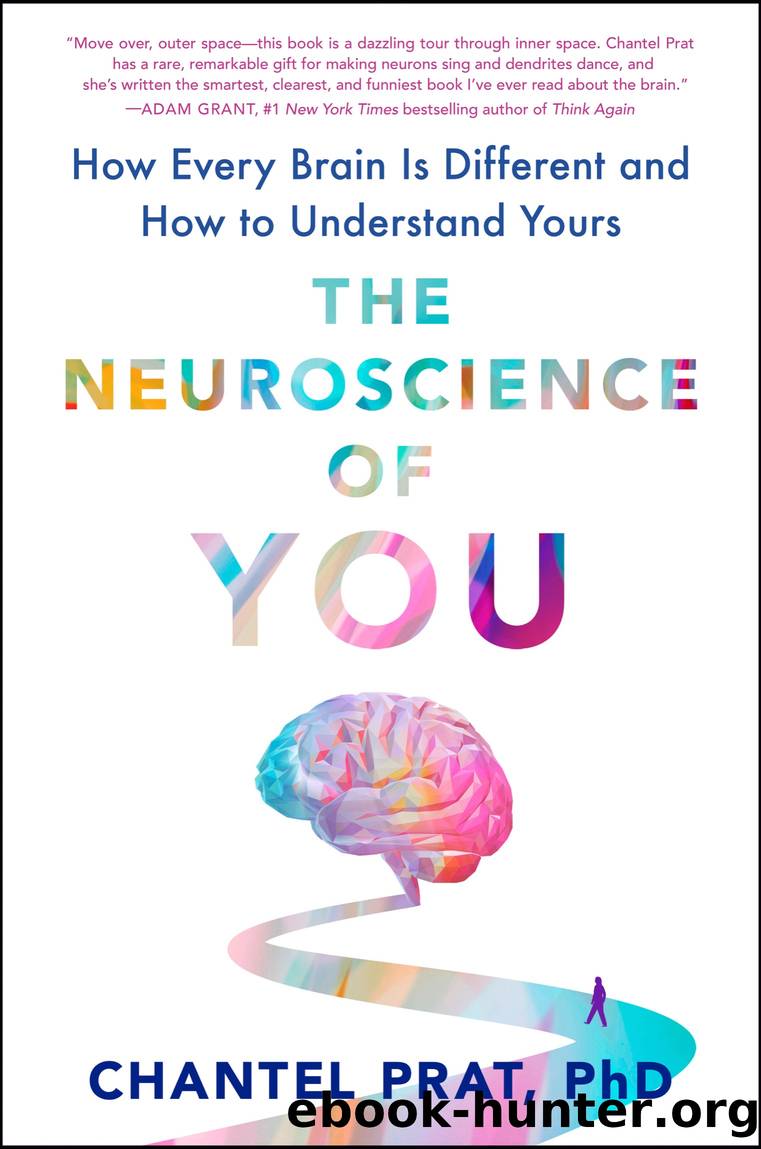The Neuroscience of You by Chantel Prat

Author:Chantel Prat [Prat, Chantel]
Language: eng
Format: epub
Publisher: Penguin Publishing Group
Published: 2022-08-02T00:00:00+00:00
Horse navigation: Learning by carrot or by stick
In âAdapt,â we spent a lot of time discussing the early, automatic shortcuts individual brains take when theyâre trying to make sense of the blooming, buzzing confusion of the world âout thereâ based on their experiences. And in âFocus,â we talked about how those experiences can also shape, and be shaped by, what we learn about the importance of various pieces of information. From your horseâs perspective, these brain functions are a means to an end. To put it simply, your horse learns to pay attention to features of its environment that are associated with good or bad outcomes while at the same time learning to ignore things that have no effect on their decision space. Learning to distinguish the sounds of a language you donât speak, for instance, is unlikely to be useful. But learning the difference between âbaâ and âpaâ in native English-speakers might empower you to request a âbananaââa real and delicious foodâinstead of a âpanana,â which isnât a thing. But to learn which features of the environment are important to consider when deciding what to do next, your brain needs a way to link the environment itâs in, and the choice it makes, to the consequences of that choice.
This process, called reinforcement learning, is one of the strongest influences on your horselike navigation systems. To move you through life in a way that maximizes your rewards, your brain engages in the following four-step procedure: First, it uses the database of your previous experiences to build the most accurate representation it can of the important features of the world around you. When bombarded with information on a busy street, for instance, doing a quick assessment of whether a person walking toward you is holding a tool or a weapon will motivate different actions on your part, while noticing what type of shoes they are wearing may be less consequential.[*] Second, based on your previous experiences in similar environments, your brain builds a representation of the repertoire of possible actions you might take. For example, you could smile and say hello to the person approaching you or engage in some other positive interaction. You might choose to remain neutral or pretend you donât see them. You could also avoid the person by walking (or running) in the other direction. Of course, there are any number of other actions available, from belting out âHaloâ by Beyoncé to deciding to sit on the corner and sketch the scene. Whether your brain considers these actions has a lot to do with your previous experiences in similar contexts. Third, based on what youâve learned from your previous actions,[*] your horse brain navigates the path it believes will bring you the most success by deciding which of the potential actions you can take is most likely to have a good outcome. Then fourth, your brain compares the actual outcome of this choice with the outcome it expected, and updates its database on the relative âgoodnessâ of that choice accordingly.
Download
This site does not store any files on its server. We only index and link to content provided by other sites. Please contact the content providers to delete copyright contents if any and email us, we'll remove relevant links or contents immediately.
Rewire Your Anxious Brain by Catherine M. Pittman(18535)
Talking to Strangers by Malcolm Gladwell(13199)
The Art of Thinking Clearly by Rolf Dobelli(10186)
Mindhunter: Inside the FBI's Elite Serial Crime Unit by John E. Douglas & Mark Olshaker(9169)
Becoming Supernatural by Dr. Joe Dispenza(8099)
Change Your Questions, Change Your Life by Marilee Adams(7617)
Nudge - Improving Decisions about Health, Wealth, and Happiness by Thaler Sunstein(7564)
The Road Less Traveled by M. Scott Peck(7510)
The Lost Art of Listening by Michael P. Nichols(7392)
Mastermind: How to Think Like Sherlock Holmes by Maria Konnikova(7202)
Enlightenment Now: The Case for Reason, Science, Humanism, and Progress by Steven Pinker(7184)
Win Bigly by Scott Adams(7081)
The Way of Zen by Alan W. Watts(6486)
Daring Greatly by Brene Brown(6431)
Big Magic: Creative Living Beyond Fear by Elizabeth Gilbert(5592)
Grit by Angela Duckworth(5500)
Ego Is the Enemy by Ryan Holiday(5274)
Men In Love by Nancy Friday(5147)
Altered Sensations by David Pantalony(5035)
